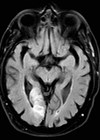Ophthalmology archive for April 2021
The ocular manifestations of COVID-19: an overview of current literature
Although respiratory symptoms are the most frequent manifestation of COVID-19, multi-organ involvement has been demonstrated, including ocular manifestations. The author investigates how the eye can be affected. The SARS-CoV-2 virus responsible for the COVID-19 pandemic has presented a significant public...
The implementation of postoperative day 1 vitrectomy telephone follow-up consultations
In this pre-COVID-19 study, the authors argue that some follow-up consultations can be done by telephone without compromising patient safety. Thirty years ago, a study by Isernhagen et al. [1] found that 52% of patients required some form of unexpected...
Gemini Untwined: treating craniopagus conjoined twins
The authors discuss the successful separation of craniopagus conjoined twins at Great Ormond Street Hospital and the role of the ophthalmologist in such cases. Craniopagus conjoined twins are extraordinarily rare, occurring in only one in 2.5 million births and representing...
Post-Brexit deal welcomed but leaves future relationship with EU far from settled
Rod McNeil breaks down the impact of the Brexit deal on healthcare in the UK, including medicines regulation, research funding, sharing of information and the ability to work abroad. A disorderly no-deal exit from the European Union (EU) was averted...
COVID-19: Pete’s Bogus Journey
The author shares his personal experience of contracting coronavirus. I managed to body swerve COVID-19 for nine months. The Pfizer vaccine was being rolled out in my trust. I had my first inoculation booked in three weeks. I had survived...
Visual disturbance heralding stroke: are we seeing the signs in time?
Isolated visual symptoms may be an early presenting feature of stroke, and timely recognition of such atypical cases is important because treatment for stroke has a limited time-window of efficacy. Stroke occurs in approximately 150,000 people per year in the...








